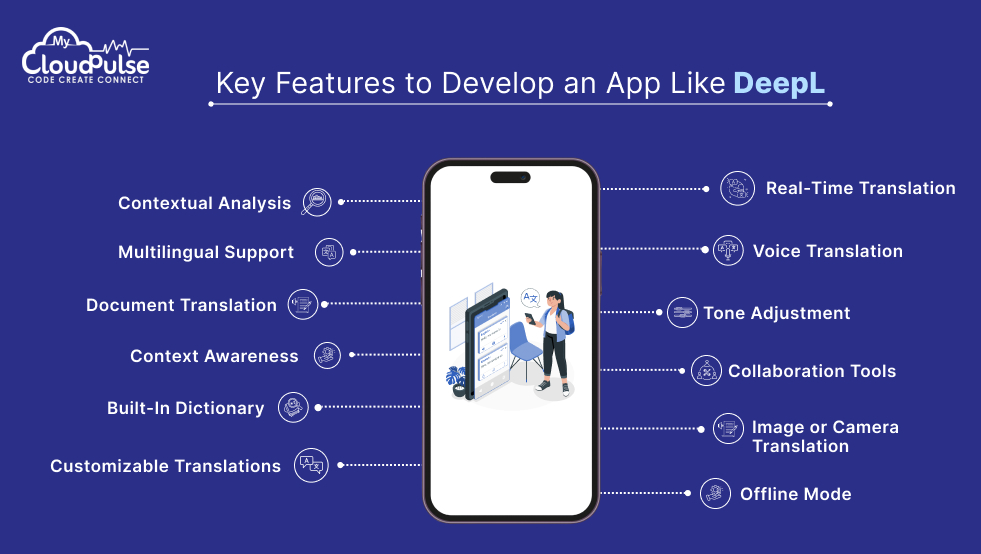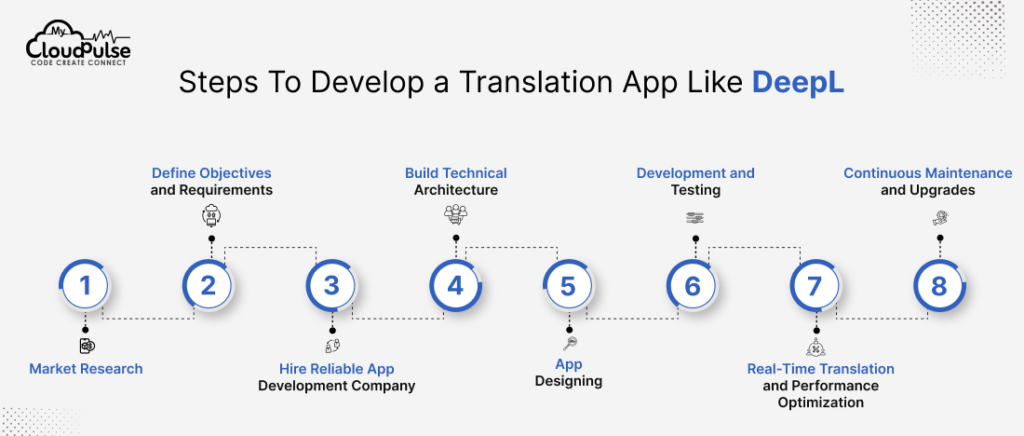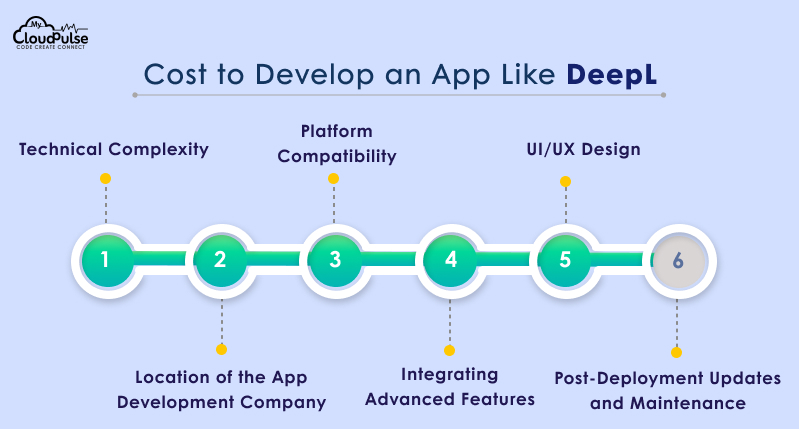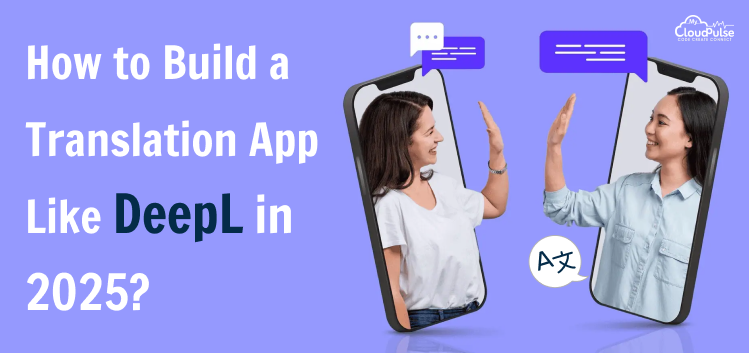Have you ever found yourself in a circumstance where language became an insurmountable obstacle? Maybe you were attempting to negotiate a menu in a restaurant overseas, interact with a corporate partner from another nation, or grasp a foreign news item.
Global communication is no longer a luxury in our linked world. People from all across the globe must be communicated to for varied purposes. In such situations, language might be a barrier requiring attention.
This is a developing planet where global communication is out of need and a building block for global-scale contact; linguistic variations may appear as hard obstacles against development and cooperation. What if, therefore, such borders never existed, turned into mere whispers, as a tool would link two far-off ends into a stream of effort and communication? And here is where we discover the next-generation language wizards—translation apps—coming to save us. Not just any translating tool but also a strong DeepL counterpart with better accuracy and focus on quality of translation.
Imagine the absolute power of always carrying a multilingual friend close at hand. Imagine the opportunities: confidently concluding agreements across borders, easily visiting other countries, and developing deep relationships with individuals from all across the world. We are starting an interesting trip into the field of translation app development like DeepL in this extensive blog article. We will explore closely the “why,” “what,” “how,” and “how much” creating your DeepL-level linguistic powerhouse requires. So relax, get your preferred drink, and let’s discover the secrets of creating translation software that breaks through linguistic restrictions and promotes world understanding.
Understanding DeepL Translation App
Let us first consider the gold standard: DeepL before we explore the nuances of creating our translating wonder. What distinguishes DeepL from the flood of other translating tools? It’s not just about mechanically translating words from one language into another. It’s about appreciating the minute subtleties, complex background, and subdued tones of meaning that define human communication so rich and varied.
DeepL uses modern artificial intelligence—especially deep learning models—to achieve astonishing accuracy and fluency in its translations. It’s like having a seasoned multilingual expert on call, someone who not only speaks many languages well but also knows the cultural setting and can provide translations that seem genuine. Consider it as the difference between a robotic, stiff translation and a flexible, interesting discussion with a well-traveled buddy who naturally moves between languages.
What distinguishes DeepL most is its capacity to grasp the background of a phrase, paragraph, or even a whole document. It examines the surrounding text to understand the intended meaning, not just translate words in a vacuum. DeepL’s contextual awareness enables it to provide not only accurate but also culturally relevant translations, therefore assuring that the message will appeal to the intended recipient.
Top Reasons To Create DeepL-Like App
Alright, so why should you even consider creating a translation software that DeepL has? Let’s break down the strong arguments for why this effort is a worthy one:
1. Increased accuracy
Regarding communication, accuracy is critical. Forget those awkward, literal translations that cause you confusion and head-scussing. DeepL-level precision guarantees clarity and comprehension by helping one to capture the actual core of the information. Imagine a high-stakes company transaction in which every element is precisely known and there is no space for misinterpretation or mistaking. This degree of accuracy may make all the difference between a good bargain and an expensive mistake.
2. Improved Reach
Your oyster is the planet; with a strong translating tool, you can release its great possibilities. Engaging a worldwide audience, you may access new markets, create foreign alliances, and broaden your horizons. Consider the many opportunities for companies looking to market their goods and services abroad or for content artists ready to distribute their works across. Unlocking a worldwide audience may depend on a translation tool.
3. Faster turnaround
Time is of the importance in the lightning-fast environment of today. Instant translations provide a competitive advantage, faster decision-making, and speedier communication. Imagine being able to instantly translate important emails or papers, therefore increasing your efficiency and output. Using a DeepL-level software will help you to meet the expectations of a worldwide society.
4. Save Money
Bid farewell to the outrageous expenses connected to hiring human translators for every translation project. Effective handling of regular translations by a well-developed translating software will free up funds for other key projects. Over time, this wise investment might result in really large cost reductions. Automating the translating process will help you to depend less on costly human resources.
5. Improved Cultural Fit
Language reflects culture not just of words but also of ideas. A DeepL-level translating tool guarantees that your message connects with your target audience as it recognizes the subtle differences of many civilizations. For marketing, branding, and developing close ties between countries, this is especially vital. Changing your message to fit the cultural setting can help your worldwide audience to develop rapport and confidence.
Essential Elements to Create a DeepL-Like App
Now let’s explore the key elements that will get your translating software up to DeepL’s level. These are the constituents of a very strong and flexible translating tool:

1. Contextual Analysis
Accurate translation starts with this. Your software has to be able to decipher word meanings within the framework of the phrase, paragraph, and general discussion. This calls for advanced natural language processing (NLP) techniques able to detect the intended meaning by analyzing the nearby text.
2. Support for Multilingualism
Your app will appeal more and have more reach the more languages it supports. Try for a wide spectrum of languages, including regional dialects and main worldwide languages. This will improve the adaptability of the software and satisfy a varied user base.
3. Translation from Documents
Documents should be easily uploaded in many formats and users should get correct translations in a few seconds. Businesses, professionals, and everyone else handling multilingual documentation depend on this ability.
4. Contextual Awareness
Your software should be able to grasp the general subject, scenario, and user intent going beyond sentence-level examination. This calls for sophisticated artificial intelligence systems that can examine the larger background and provide translations that fit and are relevant rather than merely correct ones.

5. Built-in Glossary
Easy access to definitions, synonyms, and alternate translations is given to users via a complete dictionary. This function gives consumers more language tools and improves the usability of the app.
6. Adaptable Translations
Let consumers adjust translations to suit their requirements and tastes. This tool guarantees that the result satisfies users’ expectations and gives them more control over the translating process.
7. Translation in Real-Time
For live discussions, meetings, and presentations, this is a paradigm shift. Real-time seamless communication would be facilitated by users being able to talk into their devices and get instantaneous voice translations.
8. Voice Translation
For recorded speech files as well as for real-time translation.
9. Understanding Tone Variance
Let users change the translation’s tone to match any other desired tone—formal, casual, friendly, or another. This function guarantees that the translation fits the audience and the intended message of the user.
10. Cooperative Instruments
Turn on many users to collaborate on translations, hence improving team performance and output. Companies and other entities that depend on group translating initiatives would especially benefit from this tool.
11. Image Translation
Text from photographs or by pointing their camera should be able to be translocated by users. Travelers, visitors, and anybody else who comes across foreign language text in their everyday lives will find great use for this function.
12. Offline Mode
Users who need translations in locations with restricted or nonexistent internet connectivity depend on this function. It guarantees that the program stays working even under standby settings.
Procedures to Create a Translation Tool Comparable to DeepL
All set to start the fascinating trip of creating your own DeepL-level translating tool? This thorough, detailed information will enable you to negotiate the process:

1. Market Study:
Start by doing extensive market research to learn your target audience, spot rivals, and examine industry trends. Which areas of the market now show gaps? In a translating tool, what are consumers seeking for? Existing applications have certain advantages and drawbacks. This study will provide insightful information to direct your growth.
2. Specify Goals and Needs:
Specify exactly the goals of your application. It will specifically address what particular issues? Which aspects will it incorporate? Your target audience is: The technical criteria are what? Clearly stating your goals and criteria early on helps you to guarantee that your software satisfies your consumers’ demands.
3. Employ Dependable App Development Company:
Select a respected app development firm with experience in mobile app development, artificial intelligence, and machine learning. Search for a team knowledgeable in cloud computing, deep learning, and natural language processing. Review their portfolio, read client endorsements, and make sure they possess the tools and knowledge required to realize your idea.
4. Create Technological Architecture:
Engineer the technological architecture of the app including machine learning models, APIs, and databases. Choose dependable, scalable, and secure technologies and frameworks. Think of elements like data storage, processing capability, and network architecture. This stage is very essential for guaranteeing the stability and functionality of the app.
5. Designing App Screens:
Design an understandable, aesthetically pleasing, and easily navigable user interface. Emphasize a straightforward and neat design that improves user experience. User testing helps you to get comments and improve the design depending on user preferences.
6. Development and Testing:
Create the code, combine the elements, and extensively test the software to guarantee it runs faultlessly. Apply strong testing techniques to find and resolve performance problems, faults, and bugs. Unit testing, integration testing, and user acceptability testing will help to guarantee the program satisfies the necessary criteria.
7. Real-Time and Performance Optimisation:
Perfect the app for best performance and make sure real-time translating is exact and flawless. Minimizing latency and maximizing throughput requires optimizing algorithms, data structures, and network connectivity. Perform performance tests to find areas of bottlenecks and best use of resources.
8. Ongoing Maintenance and Improvements:
Update the program often with fresh features, corrected bugs, and language support. Track app performance, get user comments, and apply changes depending on consumer demands and industry trends. Maintaining current with the most recent developments in artificial intelligence and machine learning can help the app to have more power.
Cost to Create an App Like DeepL
Let’s explore the economical sides of creating a DeepL-level translating tool. The cost might vary greatly depending on a lot of elements:

1. Technical Complexity:
The degree of the features’ complexity and the sophistication of the used algorithms directly affect the development cost. Advanced capabilities include real-time translation, speech recognition, and contextual analysis call for more intricate coding and integration, which drives more costs.
2. Platform Comfit:
Developing for many platforms—including iOS, Android, and the web—increases the cost and work involved. Every platform calls for its design guidelines, coding language, and testing practices.
3. UX/UI Design:
A well-constructed user interface and user experience call for a lot of effort and money. Though it raises the development cost, a well-designed UI/UX improves user involvement and satisfaction.
4. App Development Company’s Location:
The geographic location of the app development business affects the development expenses. Businesses in areas where labor is more expensive usually charge more for their offerings.
5. Incorporating Advanced Features:
as cutting-edge technologies such as picture translation, speech recognition, and real-time translating increase development expenses. These tools are needed for sophisticated integration and specific knowledge.
6. Maintenance and Post-Deployment Support:
Success of the application depends on constant maintenance, updates, and bug repairs. These post-deployment chores help to define the total cost of ownership.
How long will it take to create an app like DeepL?
Usually spanning six months to a year or even more, the development of a DeepL-level translating program might have rather different timelines. There are many elements influencing the development length:
1. Complexity of Features:
The development process runs longer the more complex the features are. Advanced contextual analysis and real-time translating need for more research and development.
2. Size of the Development Team:
Although a bigger development team speeds up the process, it raises the general cost. The growth pace of the team is highly influenced by its knowledge and experience.
3. Effectiveness of the Development Process:
Effective and clearly defined development methods help to simplify the workflow and shorten the schedule. Agile approaches to development may improve teamwork and speed progress.
4. Testing and Quality Assurance:
The performance and dependability of the software depend on extensive testing and quality assurance. Although it might stretch the development period, rigorous testing is very essential for producing a high-quality offering.
5. Integration of Third-Party Services:
Using outside APIs and services may affect the course of development. Complicated connections might call for further research and testing.
6. Unanticipated Difficulties:
Technical obstacles and unanticipated difficulties might surface during development, hence increasing the time horizon. Navigating these obstacles calls for both adaptation and flexibility.

Why Hire CloudPulse to Develop a Language Translating App?
At CloudPulse, we are aware of the subtleties of artificial intelligence-powered app creation. We are innovators driven by a desire to provide fresh ideas transform communication and connect individuals beyond language boundaries, not just developers. Our staff of seasoned programmers and artificial intelligence experts has the knowledge and ability to realize your idea of a DeepL-level translating software.
Our first priorities are user experience, accuracy, and performance so your software will be unique in the crowded market. Our method of growth is rigorous and cooperative; we closely interact with our customers to make sure their expectations and demands are satisfied.
Using the most recent developments in artificial intelligence, machine learning, and cloud computing, we create dependable, scalable, safe translating applications. Our unique approach based on quality and creativity distinguishes us and qualifies us as the perfect partner for your development of a translating application.
We know that creating a complicated application like this calls for a team with advanced knowledge of the related technologies. We also recognize that a good product calls for close interaction between the client and the developer. We therefore concentrate on developing a close connection with you such that all your demands are satisfied.
Conclusion
Creating a translating tool that matches DeepL’s capabilities is a bold but realistic project. With careful design, a gifted development team, and relentless attention to user experience, you may produce a tool that breaks down language barriers and promotes world understanding. The always-rising need for accurate and quick translating solutions offers a great chance for those who dare to be creative. Investing in the creation of a DeepL-level app helps people and companies to interact with the world in a smooth and significant manner.
FAQs
Answer: DeepL analyses text using deep learning models—more especially, convolutional neural networks (CNNs) and recurrent neural networks (RNNs)—to provide correct translations. To provide natural-sounding and culturally acceptable translations, it focuses on knowing the background of the text and incorporating the connections between words and phrases.
Answer: Consider elements like accuracy, language support, user interface, offline capabilities, interaction with current systems, security, and scalability before making a translation app investment. Review the app’s performance, read user comments, and determine if it fits your particular requirement.
Answer: Indeed, companies may use translating tools to provide customer service in many languages. Translation tools may improve customer satisfaction, answer questions, and ease contact with foreign clients. The correctness and cultural sensitivity of the software must, however, be guaranteed.
Answer: By use of APIs (application programming interfaces) and SDKs (software development kits), translator applications may interact with current systems. While SDKs provide pre-built components and frameworks for developers, APIs allow for flawless data transmission and feature integration.


